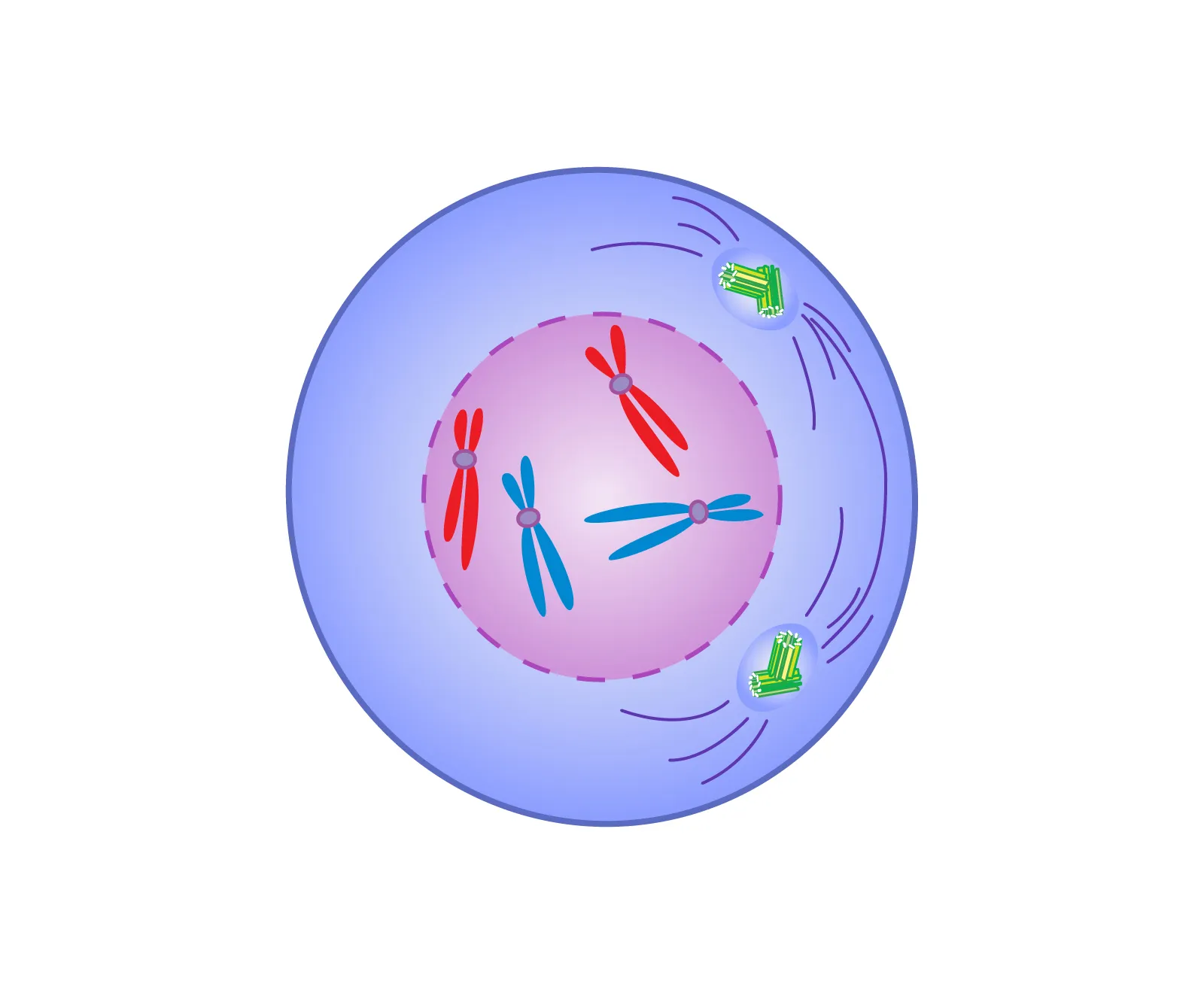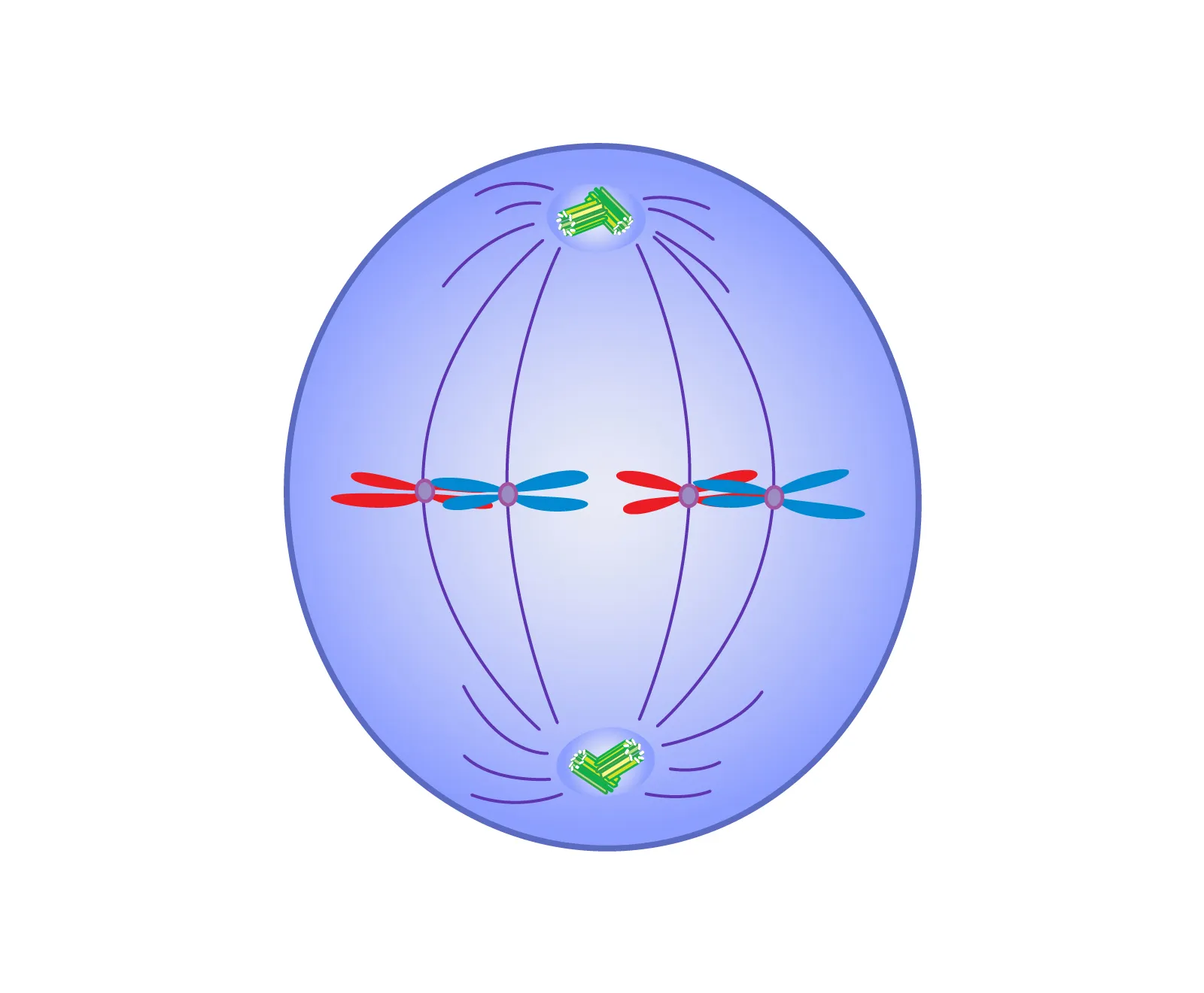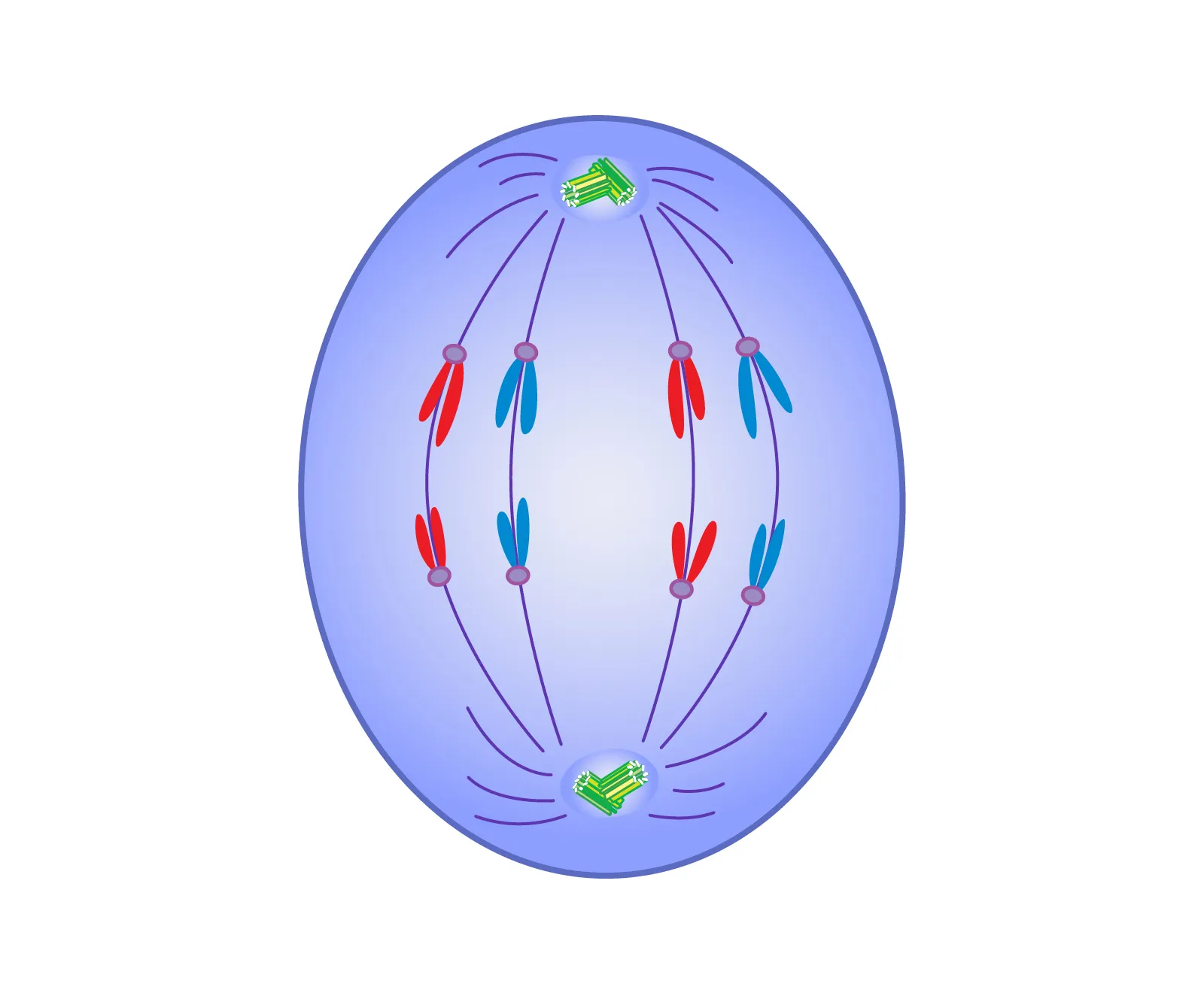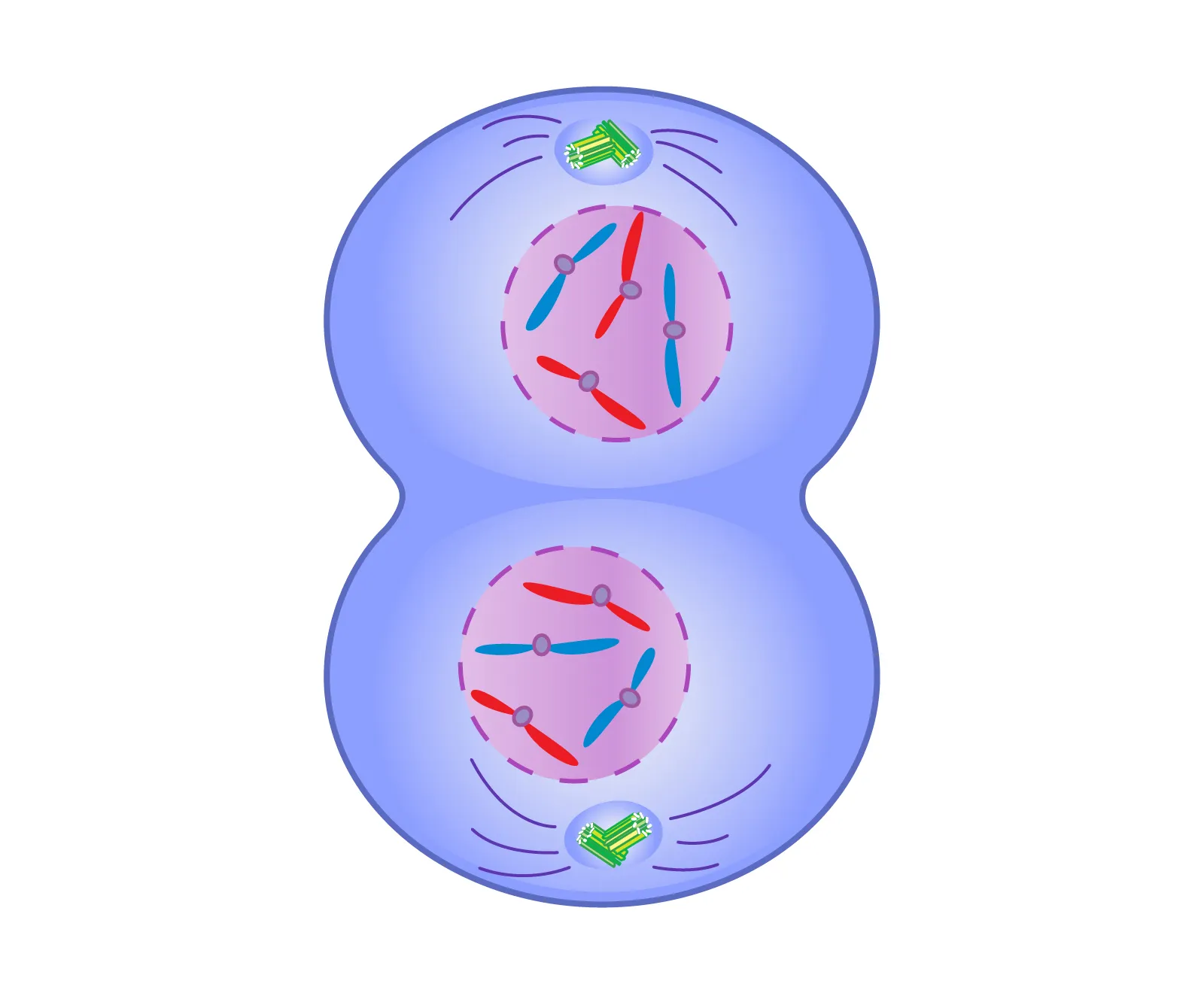ap bio unit 4 review
1/53
Earn XP
Description and Tags
Name | Mastery | Learn | Test | Matching | Spaced |
|---|
No study sessions yet.
54 Terms
Cell-to-Cell Communication
The process by which cells interact and communicate with each other through signaling molecules and receptors, allowing for coordination of functions and responses in multicellular organisms.
Interphase
The phase of the cell cycle where the cell prepares for division by growing and replicating its DNA. It consists of G1, S, and G2 phases.
G0
A phase in the cell cycle where cells are in a quiescent state, not actively dividing, but can re-enter the cycle under specific conditions.
G1
The first phase of interphase where the cell grows in size and synthesizes mRNA and proteins in preparation for DNA replication.
S Phase
The part of interphase where DNA is replicated, resulting in the duplication of chromosomes before cell division.
G2
The second phase of interphase where the cell continues to grow and prepares for mitosis by synthesizing proteins and organelles, ensuring all necessary components are ready for cell division.
M Checkpoint
A regulatory point in the cell cycle that ensures all chromosomes are properly attached to the spindle apparatus before proceeding with mitosis.
Mitosis
The process of cell division that results in two genetically identical daughter cells, consisting of prophase, metaphase, anaphase, and telophase.
Prophase
The first stage of mitosis where chromatin condenses into visible chromosomes, the mitotic spindle begins to form, and the nuclear envelope breaks down.

Metaphase
The second stage of mitosis where chromosomes line up along the metaphase plate, and spindle fibers attach to the centromeres of each chromosome.

Anaphase
The stage of mitosis where sister chromatids are pulled apart to opposite poles of the cell, ensuring each daughter cell will receive an identical set of chromosomes.

Telophase
The final stage of mitosis where the chromosomes reach the opposite poles, begin to de-condense back into chromatin, and the nuclear envelope re-forms around each set of chromosomes.

Cytokinesis
The process that follows mitosis, where the cytoplasm of a parental cell divides into two daughter cells, resulting in the physical separation of the two cells.
Direct Contact
A form of cell signaling where cells communicate through direct interactions, often via membrane-bound receptors.
animals do this through gap junctions
plants do this through plasmodesmata
Local Regulators
Signaling molecules that act over short distances to influence nearby cells, often involved in processes like inflammation and tissue repair.
Ex (paracrine & synaptic signaling)
Paracrine Signaling
A form of local signaling where cells secrete signaling molecules that affect nearby target cells, facilitating communication within a localized area.
Synaptic Signaling
A type of local signaling specific to neurons, where neurotransmitters are released into the synaptic cleft to communicate with adjacent nerve or muscle cells.
Long Distance Signaling
The process by which cells communicate over greater distances, often involving hormones or other signaling molecules that travel through the bloodstream to reach target cells.
plants release hormones (travel through air to reach target cell or travel through plant tissue)
animals use endocrine signaling (specialized cells release hormones into the circulatory system then go to the target cell)
Reception
The process by which a target cell detects and responds to a signaling molecule, typically involving a receptor protein that binds to the signaling molecule, initiating a cellular response.
binding is highly specific
initiates signal transduction
Plasma Membrane Receptor
A type of receptor protein located in the plasma membrane of cells that binds to signaling molecules, initiating a response within the cell. These receptors play a crucial role in signal transduction pathways.
binds to polar, large, water-soluble molecules
GPCR’s and Ligand Gated ion channels
Intracellular Receptors
Receptors located inside cytoplasm or nucleus that bind to signaling molecules that can pass through the plasma membrane, such as steroid hormones. They often act as transcription factors, regulating gene expression.
hydrophobic molecules
steroid and thyroid hormones
Transduction
The process by which a cell converts a signal received by a receptor into a specific cellular response. This often involves a cascade of molecular events, including the activation of enzymes and the production of second messengers. Phosphorylation of kinases is a key mechanism in this process, amplifying the signal and leading to a variety of cellular responses.
Phosphorylation
The addition of a phosphate group to a molecule, typically a protein, which can alter its activity and function. This process is crucial in signal transduction and cellular regulation.
Dephosphorylation
The process of removing a phosphate group from a molecule, often reversing the effects of phosphorylation. This can regulate the activity of enzymes and proteins, affecting various cellular functions.
Second Messengers
Small molecules that relay signals from receptors to target molecules within the cell, playing a crucial role in signal transduction pathways.
Cyclic AMP (cAMP)
Response
The cellular change or effect that occurs as a result of a signal transduction pathway, often involving altered gene expression, enzyme activity, or cellular behavior.
Homeostasis
The maintenance of a stable internal environment in an organism, despite external changes. This involves various physiological processes that regulate factors like temperature, pH, and electrolyte balance.
Negative Feedback Loops
Processes that counteract changes in the body to maintain homeostasis by reducing the output or activity of a system.
sweat
blood sugar
breathing rate
Positive Feedback Loops
Processes that enhance or amplify changes in the body, leading to an increase in the output or activity of a system, often resulting in a specific physiological outcome.
child labor
blood clotting
food ripening
Stimulus
Any change in the internal or external environment that elicits a response from an organism.
Receptor/sensor
A structure or molecule that detects changes in the environment and sends signals to the control center to initiate a response.
Effector
A muscle or gland that carries out the response to a stimulus as directed by the control center.
Response (homeostasis)
The action or change in behavior of an organism resulting from a stimulus, aimed at maintaining internal balance.
Homeostatic Imbalances
Conditions that disrupt normal homeostasis, leading to disease or dysfunction.
cancer: cant regulate cell growth
diabetes: cant regulate blood glucose levels
Histones
Proteins that help package and order DNA into structural units called nucleosomes, playing a crucial role in gene regulation.
Nucleosomes
Structural units of DNA wrapped around histones, fundamental for chromatin organization and gene expression regulation.
Chromatin
The complex of DNA and proteins, including histones, that forms chromosomes within the nucleus of eukaryotic cells, essential for packaging DNA and regulating gene expression.
when not actively dividing, stays in non-condensed form
chromosome
A thread-like structure made of DNA and proteins that carries genetic information. Chromosomes become visible during cell division when the chromatin condenses.
chromosome condensed packing
refers to the process by which chromatin fibers coil and fold into a highly compact structure, allowing for efficient segregation during cell division.
Sister Chromatids
Identical copies of a chromosome, connected by a centromere, that separate during cell division.
Centromere
The region of a chromosome where sister chromatids are joined and where the spindle fibers attach during cell division.
Kinetochore
A protein structure on the centromere where spindle fibers attach to pull sister chromatids apart during cell division.
Genome
The complete set of genetic material in an organism, including all of its genes and non-coding sequences.
Homologous Chromosomes
Chromosome pairs, one from each parent, that are similar in shape, size, and genetic content.
Somatic Cells
Any cells in the body that are not gametes, responsible for forming tissues and organs.
body cells, diploid, divide by mitosis
Gametes
Reproductive cells, haploid, unite during fertilization.
divide by meiosis
Apoptosis
Programmed cell death, a process that eliminates unnecessary or damaged cells in an organism.
Internal Cell Cycle Regulators
Cyclins (concentration can vary)
are synthesized and degraded at specific stages of the cell cycle
Cyclin-Dependent Kinases/CDKs (concentration is CONSTANT)
active only when its specific cyclin is present
Cyclin CDK complex
the cell to progress through the cell cycle by phosphorylating target proteins.
External Cell Cycle Regulators
Growth Factors: hormones released by cell that stimulate cell growth
signal transduction pathway is initiated, CDKs activated leading to cell cycle progression
Contact (or density) inhibition: Cell surface receptors recognize contact with other cells
Initiates signal transduction pathway that stops the cell cycle in G1 phase
Anchorage dependence: cells rely on attachment to other cells or the extracellular matrix to divide
Cancer Cells
Normal cells become cancerous through DNA mutations
Do not follow checkpoints, divide infinitely when in culture
Considered to be “immortal”
Evade apoptosis and continue dividing even with errors
Why is mitosis important for plant growth?
Mitosis is crucial for plant growth as it allows for the division of cells, enabling the production of new cells for root, stem, and leaf development. This process supports the increase in tissue mass and aids in the repair and regeneration of damaged plant structures.
What do Cyclins do?
Cyclins are proteins that regulate the cell cycle by activating cyclin-dependent kinases (CDKs), which drive the progression through different phases of the cell cycle.
What do CDKs do?
CDKs, or cyclin-dependent kinases, are enzymes that, when activated by cyclins, phosphorylate target proteins to regulate the progression of the cell cycle. They play a critical role in controlling the timing of cell cycle events.